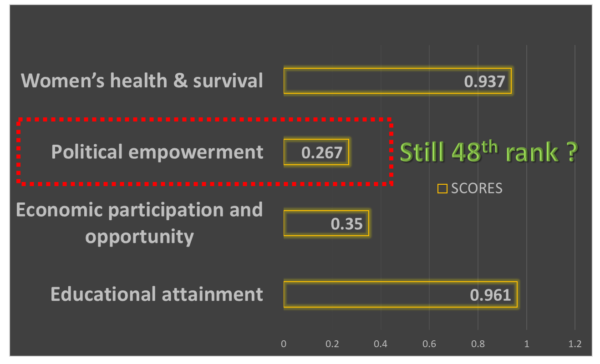INDIA and its Status on Gender Gap
The Global Gender Gap Report of 2023 provided by WEF (World Economic Forum) with a coverage of 146 countries, suggests that the overall gender parity throughout the world is only 68% and with this pace it would require about 132 years to attain complete gender parity. Health and survival indices depict least bias that means, out of all the criteria this sector has most parity or equality.

Other than that, Iceland persists to be the most gender equal nation for consecutively 14 years. Other European and American countries also have decent records in this subject.
Coming to India and its status in this matter, it holds the 127th position out of all the 146 countries. Although India has improved from its previous rank, there are still certain points that we need to think upon. Its neighbors reportedly have better gender equality with the best result being that of Bangladesh, with a rank of 59!! Being a developing country whose economic and educational status is still behind those of India, Bangladesh wins over most of the countries of the Indian subcontinent. And India being global leader unfortunately lags behind all of them.
NOW, we need to know about the indices based upon which, the calculation has been made. They are
- Education
- Health
- Governance
- Occupation
Involvement of women in these sectors in their respective age groups has been calculated.
As we are talking about India, let us see the status of India in these parameters.
- Educational attainment 107th Rank with 96% parity
- Economic participation and opportunity 143rd Rank with 35% parity : This suggests that women in our are not contribution much to the national economy, there could be many reasons behind this, household responsibilities, unwillingness of the family or the person herself are a few of the them.
- Political empowerment 48th Rank with 27% parity : With initiatives like, 33% reservation for female participants, we as a nation have come a long way in promoting women for the same. Also, India has gotten her 1st ever female president belonging to minority as well. Such achievements represent the cleansing of societal judgements in our country
- Women’s health & survival 146th Rank with 94% parity : When it comes to health and survival, we can see that India ranks the last of all with 94% parity, this indicates that the world is conscious about women health and survival.
Now the question arises, what can we do to improve our status?
As we can see, despite having as low as 27% of gender parity in polity and governance, India still ranks the 48th position in this category. Does it mean that women are not confident enough to participate in politics? Or is the world still not willing to accept female domination when is come to governance. Overall probably we all are dawdling to encourage women to join politics.
These counts need to be bettered in the upcoming years if we want to grow as a superpower in the future.


